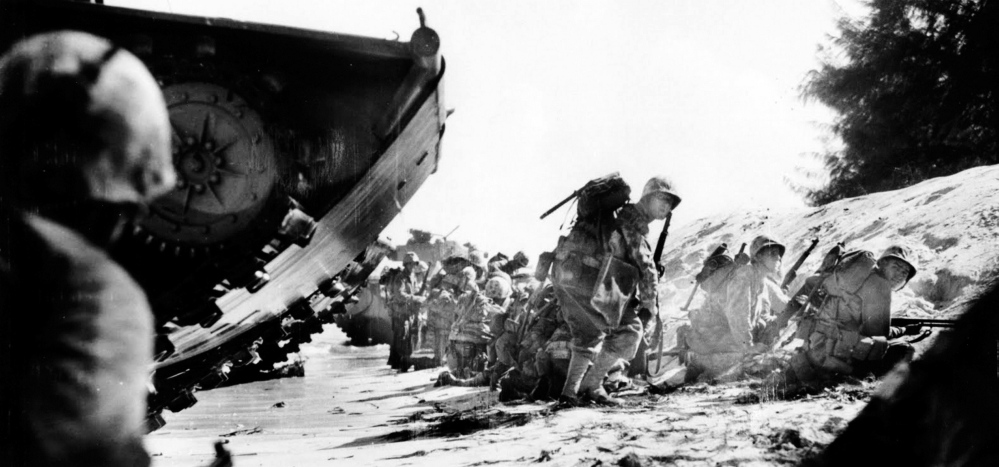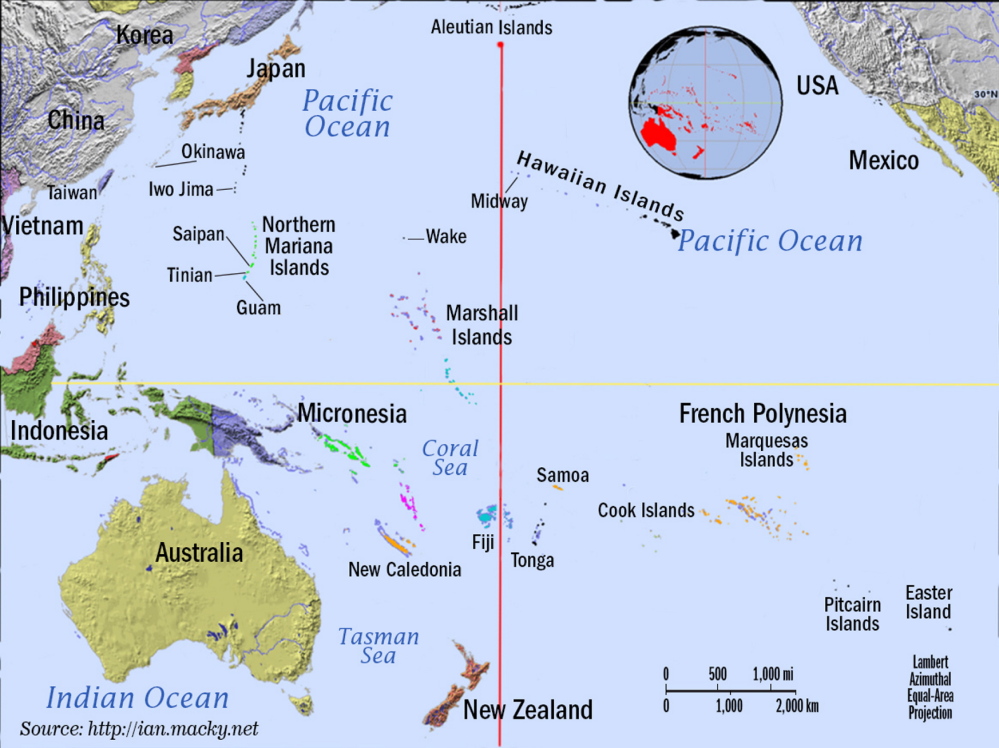Almost 50 Marines who were in Company G, 2-23, 4th Marine Division, during World War II renewed their ties in 1995 on “A Weekend Pass” to Atlanta.
Some of these Marines, who were like family a half-century ago, had not seen each other since the war ended.
In addition to the Marines themselves, there were brothers, sisters and children of those who had fallen overseas, as well as strangers who had learned about the gathering and arrived seeking information about a relative who had died on some Pacific island.
Wives who had heard stories again and again about long ago happenings now were meeting those Marines involved.
The memories stored in the minds of each man could fill books. They remembered life in the States before shipping out and then, “Remember that night we boarded The Sheridan at San Diego and sailed to Maui, then to the Marshall Islands?”
They remembered hitting the beach at Roi on Feb. 1, 1944, crawling from amphibious tractors, fear and fighting, seeing firsthand how cruel war really was. They were the first to attack and retake pre-war Japanese territory.
There were stories about the few months on Maui and loading on landing crafts known as LSTs and sailing for Pearl Harbor. They remembered six LSTs exploding, with the loss of more than 400 lives, a story that was kept secret until 1960.
The Marines shared memories about the giant armada that gathered in the Marshalls and moved toward a secret destination: Saipan. They remembered the night prior to assaulting the Saipan beach, singing hymns aboard the LST, a breakfast of steak and eggs. Company G went ashore in the first wave at 8:13 a.m. June 15, 1944.
Twenty-five days of horror followed on Saipan, days filled with snipers, Japanese artillery and tanks, banzai attacks in the night, a Japanese bomber nicknamed Midnight Charlie.
“Do you remember when Freeby tried to save Nightingale?” one asked.
Richard Freeby, of Texas, later received the Silver Star for his heroic efforts to save the wounded Wendal Nightingale of Skowhegan, Maine, at great personal risk. Nightingale did not survive the Battle for Saipan, but is still officially Missing in Action. His name is recorded in the Court of the Missing in the National Cemetery of the Pacific, Honolulu, Hawaii.
Yes, they remembered. Heroics were common. Some heroes were recognized, but many were not because their officers died before they could write the citation. Forty Company G Marines died there.
And then there was that “little mop-up” operation three miles away on the nearby island of Tinian. Thirteen Company G Marines died there. They didn’t realize at the time how important that seemingly insignificant piece of land would become to history. It was from Tinian that Paul Tibbetts flew the Enola Gay in August 1945 carrying the atomic cargo that ended the war, savings millions of lives on both sides of the conflict.
The survivors of those engagements returned to Maui. Those whose wounds had healed returned to the company from hospitals at Pearl Harbor, Guadalcanal, New Caledonia. The company’s depleted ranks were filled with young and eager Marines just out of boot camps at Parris Island and San Diego, many just a year out of high schools from all over America. The company’s old privates were now corporals and sergeants.
The original Company G Marines and the new Marines trained hard at Maui. They knew that the war in the Pacific was not over, and more islands were strongly defended by the enemy.
They remembered, and would never forget, Iwo Jima. They remembered men who had been wounded and evacuated to first-aid ships, then recovered sufficiently to volunteer to return to the beach and to their buddies who needed them. Forty-one Company G Marines died there.
Company G had completed four major Pacific campaigns — the Marshalls, Saipan, Tinian and Iwo Jima — and had suffered 81 percent casualties. There was never a victory parade for Company G. Each man returned to the states individually. Some without an arm or a leg, some with ugly, visible scars, some with terrible scarring of the mind. Some returned in a box. And some — Nightingale, Lt. James Leary, Anderson, McDonald, Baxter and others — whose bodies were never found, remained where they had died.
Those who lived came home, and became salesmen, plumbers, attorneys, teachers, truck drivers, businessmen, clergymen. They raised families and attended churches and voted. They proudly pledged allegiance to the flag of the United States, and stood at attention when the national anthem was sung.
And on that Sunday morning nine years ago, as a color guard of young Marines stood at attention while the name of every fallen comrade was read aloud, the men of Company G, old men now, remembered and reflected and cried.
Carl Matthews, of Cedar Hill, Texas, was a member of Company G, who made it home after World War II and attended the reunion in 1995.
Copy the Story LinkSend questions/comments to the editors.




Success. Please wait for the page to reload. If the page does not reload within 5 seconds, please refresh the page.
Enter your email and password to access comments.
Hi, to comment on stories you must . This profile is in addition to your subscription and website login.
Already have a commenting profile? .
Invalid username/password.
Please check your email to confirm and complete your registration.
Only subscribers are eligible to post comments. Please subscribe or login first for digital access. Here’s why.
Use the form below to reset your password. When you've submitted your account email, we will send an email with a reset code.